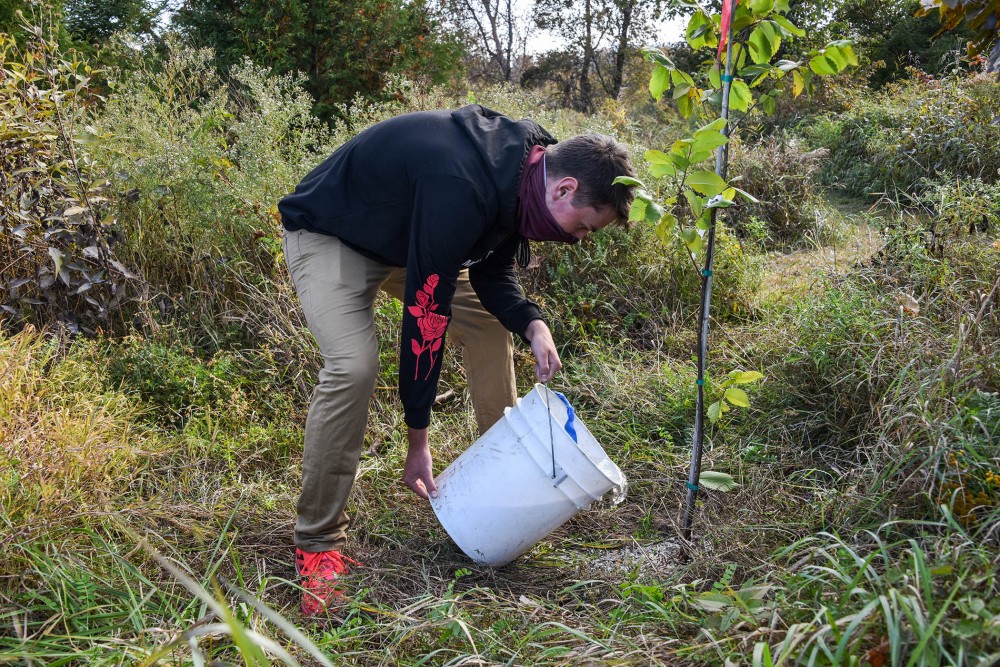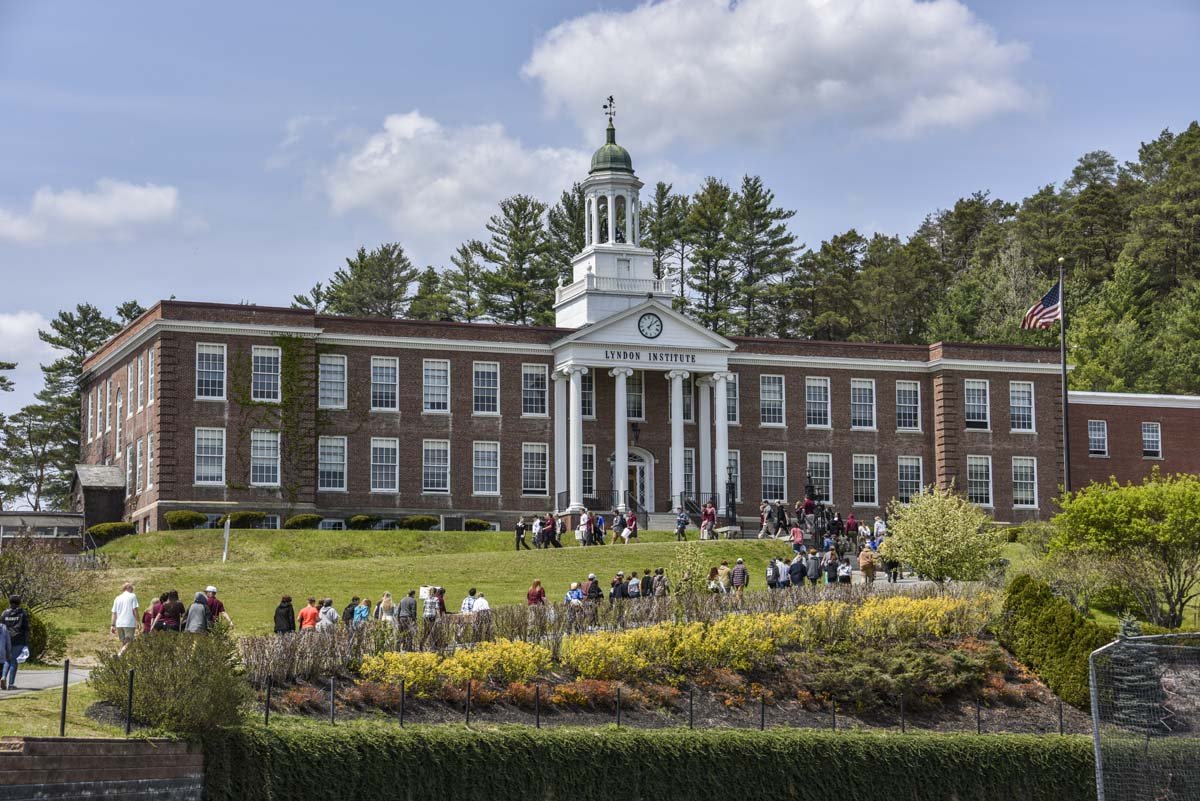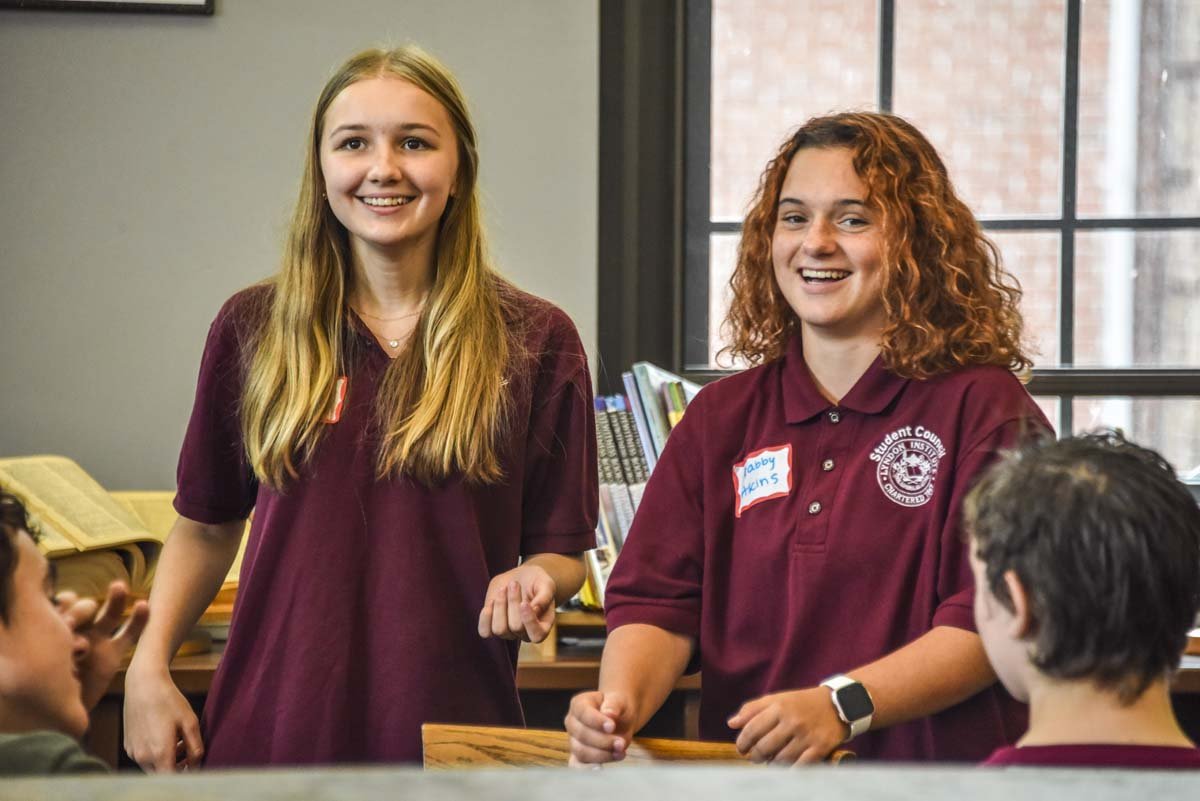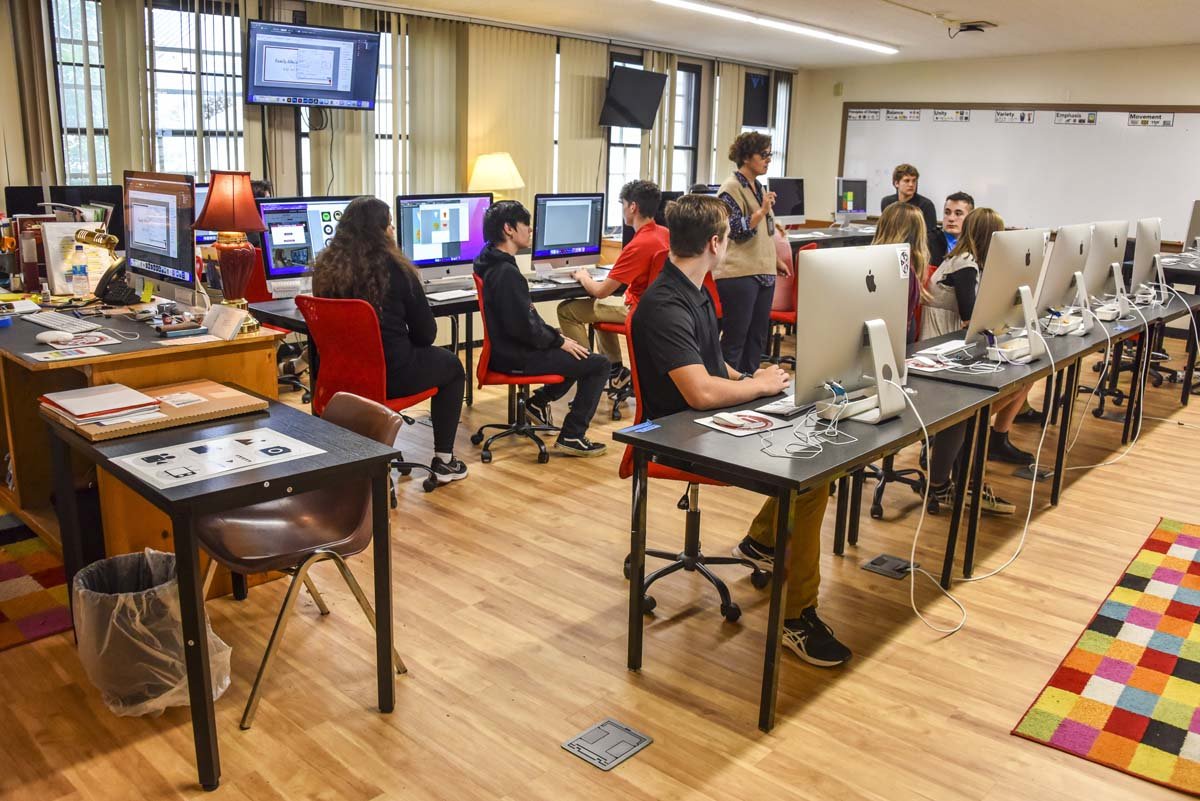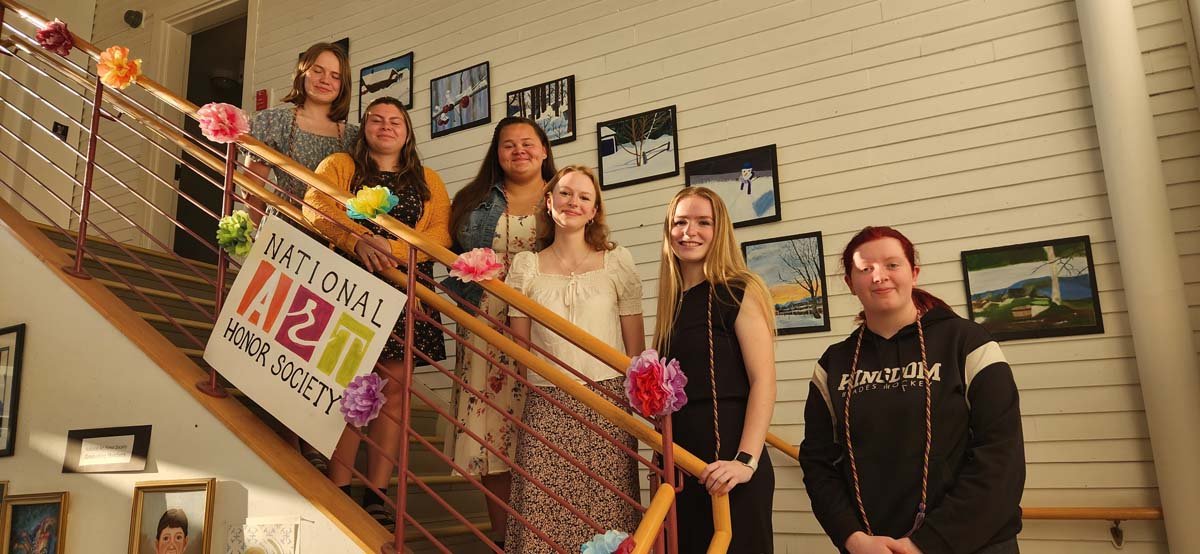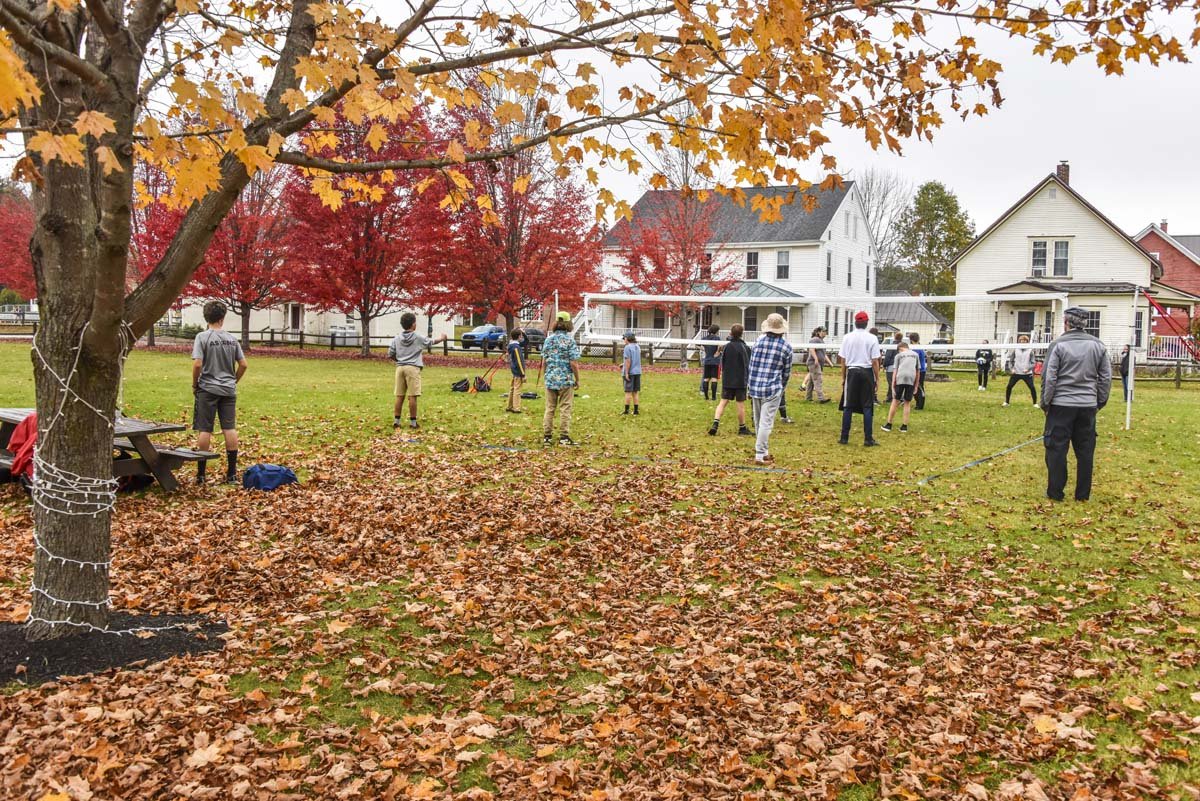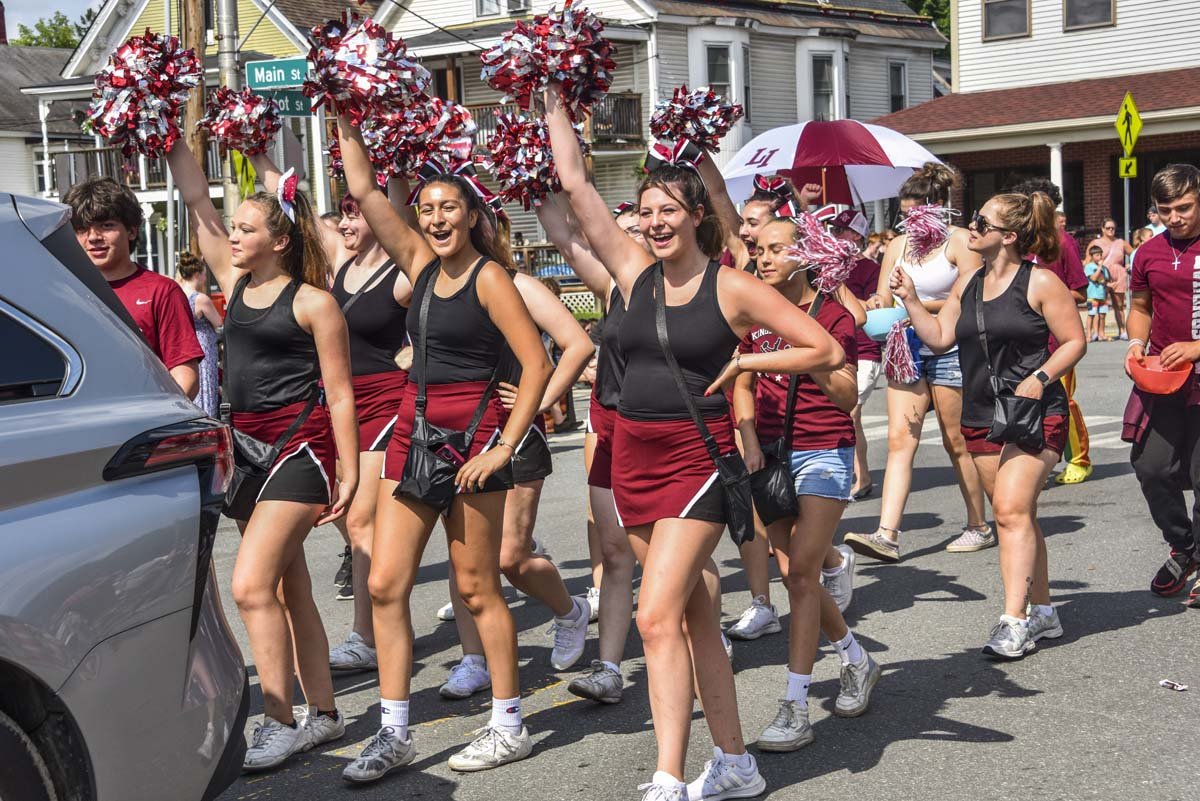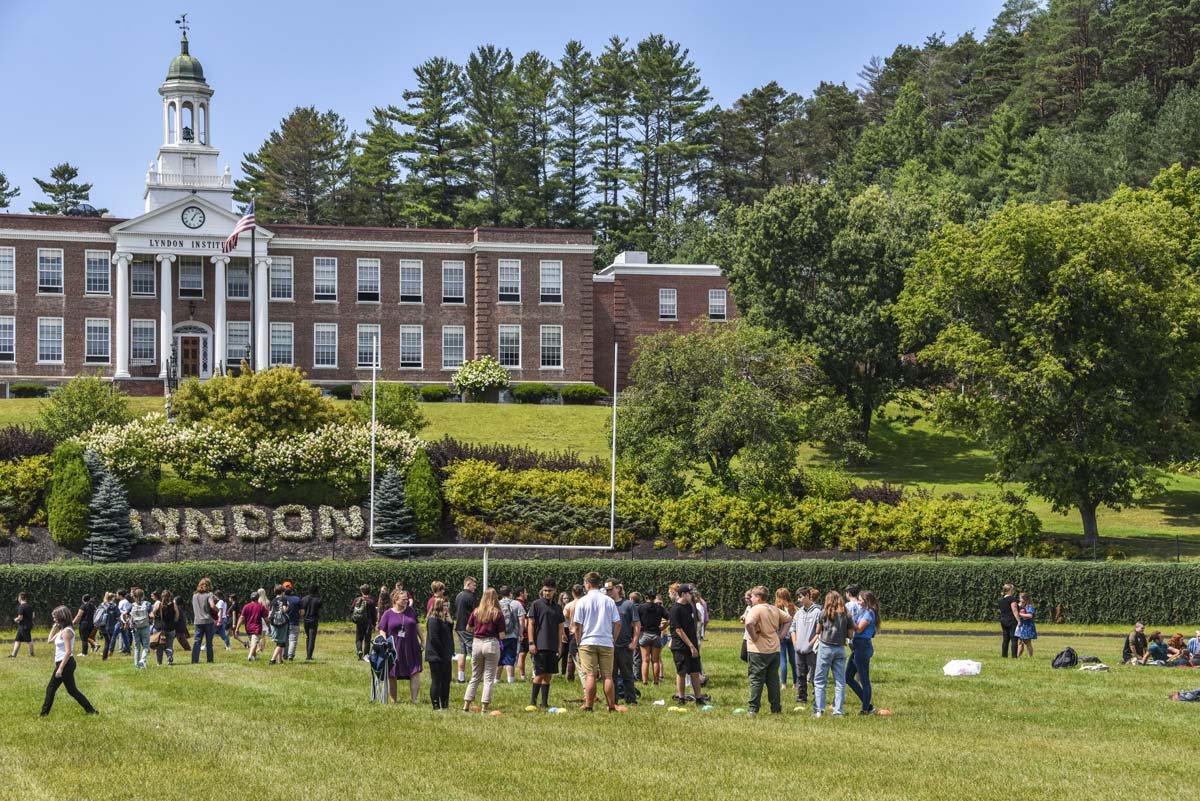- Our School
- Admissions
-
Academics
- Divisions and Faculty
- Commencement 2024
- January Term
- International Program (ESOL)
- College and Career Counseling
- Upward Bound
- Library/Monahan Academic Commons
- Career/Technical Education
- Lyndon Learning Collaborative
- Flexible Lyndon Institute Pathways (FLIP)
- Specialized Instruction
- Adult Continuing Education
- Lyndon Institute Course Catalog
- Student Services
- Arts
- Athletics
- Campus Life
- Support LI
- Alumni
« Back
Class Acts: Restoration Along the Passumpsic
October 1st, 2020
By: David Stahler Jr.
There is something life-affirming about planting a tree. It is a hopeful act—we put something small in the ground with the belief that it will take root, we nurture it in the expectation that it will flourish, and with luck it prospers and offers value long after we’re no longer around to see it. In some ways, it’s a bit like teaching.
Students in Jill Nichol’s Environmental Science class and Jerry Leonard’s Diversified Agriculture program got a chance to experience the act first-hand on Wednesday, September 23rd. On a mild, sunny morning, with the maples well on their way to peak color, the two groups gathered together on the banks of the Passumpsic at the far edge of the practice fields below lower campus with Gus Goodwin and Jack Markoski, two members of the Vermont Nature Conservancy. Their goal—to plant over twenty disease-tolerant American elm trees along the edge of the floodplain in the hope of helping restore the species to the Northeast Kingdom.
Those old enough will remember how the American elm once dominated the landscape of Vermont’s river valleys until Dutch elm disease wiped out nearly all the giants in the 70s and 80s. And while elms still grow in Vermont, they rarely achieve significant size before succumbing to the disease. But the Vermont Nature Conservancy, who for sixty years has worked to preserve over 300,000 acres of wildlife habitat throughout the state, is determined to help restore this species all across the state by planting saplings cloned from disease-tolerant American elms found in other parts of the country.
The day before the planting, students in Leonard’s Diversified Agriculture program marked thirty different sites along the Passumpsic, with twenty on a peninsula in the far corner of LI’s practice fields and ten further north between the practice fields and Lyndon’s walking path. Students learned the importance of ensuring the sites were marked at least thirty feet apart to prevent the trees’ roots from growing together, making them more vulnerable to transferring disease, and GPS tagging each site’s location for future tracking and research. The next morning, Leonard’s students came in on their off-day, normally designated for online learning, to help Nichol’s Environmental Science students get the saplings safely into the ground.
The session began with the Nature Conservancy’s Gus Goodwin giving an overview of the project’s goals and the American elm’s historical role in maintaining the health of Vermont’s flood plains. His partner Jack Markoski followed with a tutorial, showing students how to dig the correct-size hole, safely transfer the root ball from its container into the ground, and give it the vital dose of water needed to survive the transfer.
From there, students broke up into teams. Wearing masks and maintaining social distance, students assumed roles within the group: one person dug the hole, another transferred the root ball, while a third soaked the transplant. Meanwhile, another group of students served as the “water brigade,” helping Goodwin transfer five-gallon buckets of water from the Passumpsic—now running low after weeks of little rain—to the teams working in the dry soil. Students were careful to separate and alternate the five different strains of elm, with names like “Princeton,” “Valley Forge,” and “Delaware” indicating their parent trees’ places of origin, to help ensure the saplings’ best possible chance of survival as they grow.
The project served as an early, informal “lab” for Nichol’s Environmental Science class. Students read an academic paper or watched a webinar from the Nature Conservancy on the science behind the project before the planting session. After the session, students wrote about the experience and discussed what they had learned. And while the project isn’t a part of the class’s normal curriculum, Nichols—who last June began discussing the project with Goodwin, a friend and former classmate at Middlebury College where the two studied biology and environmental science together—saw it as an opportunity too good to pass up.
“Any time you can get students into the field for some experiential learning, you try to take it,” she said.
Nichol’s students seemed to agree. I asked one of the students spreading soil along the edges of the hole around a newly-planted root ball how she felt about getting her hands dirty on a late September morning. “Beats being in class,” she said with a smile.
After some initial hesitation, not uncommon early in the year when classes are getting to know each other and work together for the first time, the teams quickly went to work, gaining confidence as each tree made its way into the ground. “It was controlled chaos at first,” Nichols joked. “But they got the job done.”
With luck, the saplings will not only take root and grow but carry on their parents’ tolerance to Dutch elm disease and spread their seed to foster a new generation of resistant elms. And with more luck, decades from now, these students will return with their own children and grandchildren to the banks of the Passumpsic to marvel at the mighty canopies spreading overhead and remember what they did to help restore this species to its former glory.
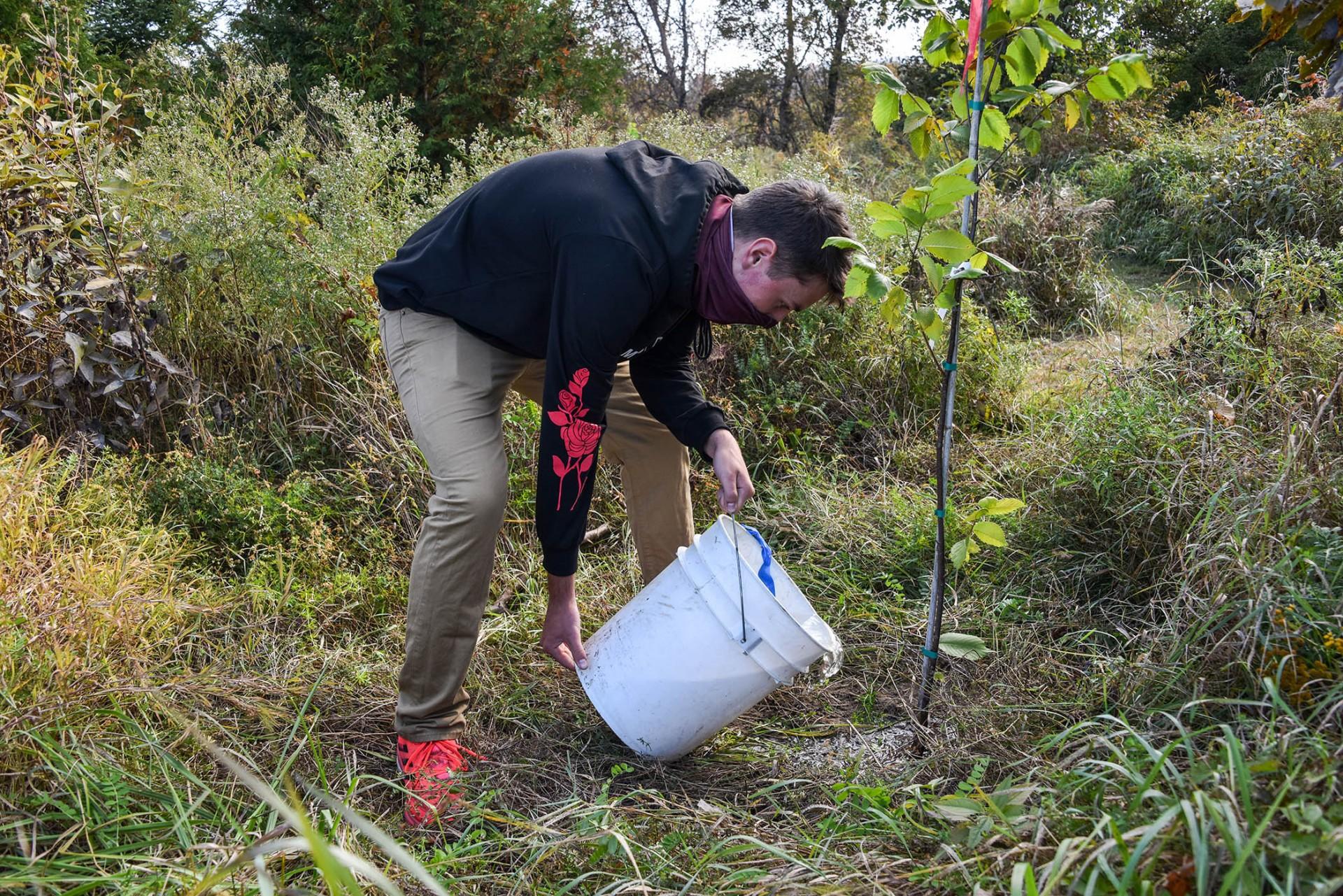
Photo caption: Lyndon Institute junior Tristan Lefebvre waters an elm tree sapling on the bank of the Passumpsic River on Wednesday, September 23rd. LI students in both the Environmental Science and Diversified Agriculture classes in conjunction with the Vermont Nature Conservancy planted the disease-tolerant trees in an effort to restore the species to the Northeast Kingdom.
Posted in the category Front Page.

